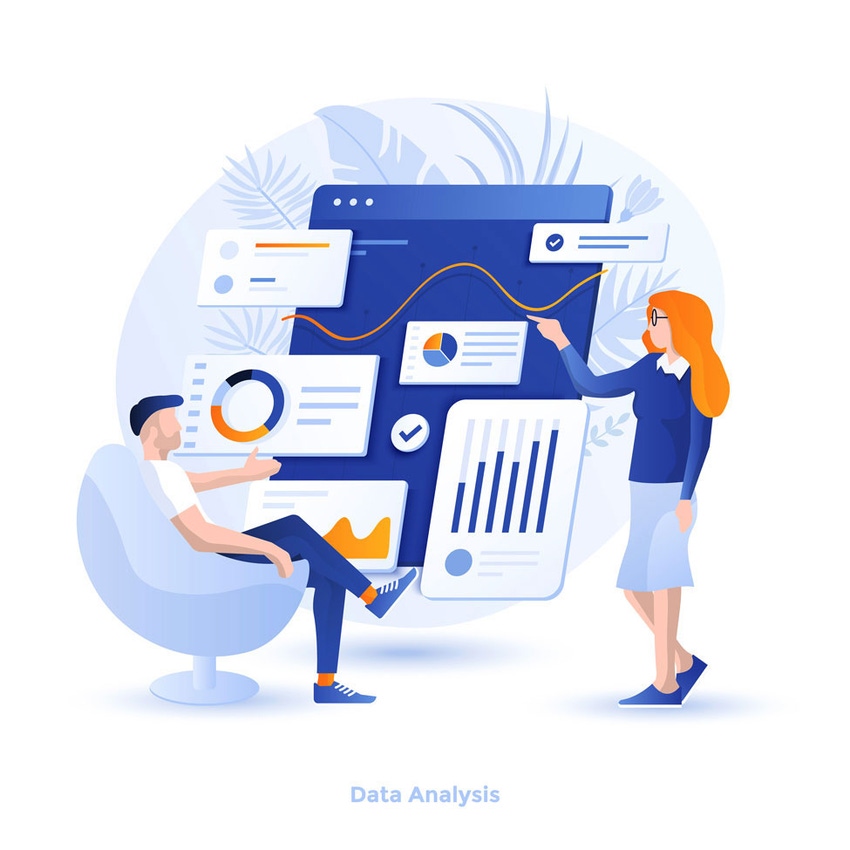March 28, 2019

SAN DIEGO - When we talk about AI, what we're really discussing is the intelligent use of data. Conventional methods for automating data processing, from machine learning to deep learning, dominate the technology conversation around AI.
But new approaches to AI are emerging all the time. One of these is time series AI, which analyses data in a time-ordered sequence in order to improve predictability rates.

Andreas Roell is a managing partner of Analytics Ventures, a San Diego-based venture studio which deploys capital towards ventures formulated and incubated in-house. Now with a total of eight businesses in their portfolio, ranging from healthcare to advertising and cloud computing, the studio is working across a broad range of verticals.
However, the common theme across all of them is that they all utilize time-series AI, which Andreas claims demonstrates higher accuracy levels than conventional predictive analytics methods.
Q: What is
the value of time series AI for businesses? How does it compare to conventional
machine learning approaches?
When you think about time series data, it’s all about
predicting the future using time-dependent data from multiple data sources that
aren’t necessarily aligned. With businesses beginning to ask why and how they
should apply AI, there’s the question of how critical accuracy is to the business
solution. If accuracy becomes the real determining factor, then time series AI
becomes pertinent because time-dependent datasets are what businesses are often
dealing with.
However, if you’re seeking a high level of accuracy,
then you have to have techniques which allow you to deal with the uncertainties
that are typical in a time series environment. You have to be good at event detection
and aligning these datasets and making sense out of them in a combined and coordinated
fashion. There’s this whole challenge around noise in the dataset, whether
there’s missing points in the time sequence or a data gap, so how do you still
provide predictability around those?
The other part that’s very interesting around how this comes into play for businesses is that out of the box solutions do typically require a meaningful amount of data in order to conduct the learning effort. Many businesses just don’t have those large datasets in place. The first question around what they can do with AI becomes one of how they can work with data in order to get to a forecasting environment which is useful for their business.
Related: Where Is AI In Banking Today?
Q: What are
some tangible results time series AI has driven for you?
Everyone talks about AI, but are they ready and
willing to apply AI in their traditionally known processes or approaches?
One of our ventures, CureMetrix, is using AI in mammograms to better detect the early signs of cancer. However, in the lifecycle of a woman’s breast, you have multiple sequences of these events with multiple image progressions. There’s then a very scarce amount of data in terms of understanding the progression of anomalies in breasts. When you try to deploy the AI in that environment, you don’t have a robust dataset, so you have to look at historical data to increase the accuracy level of detection. Furthermore, on top of that, the skillset required to detect every type or variation of breast cancer in the scans is not there.
Therefore, what we had to do was develop an
environment where we could take sparse data and synthetically create anomalies
in breast imagery. So using AI, we pretty much faked a cancerous element in a
breast to the point where we had enough data that the algorithms culd learn and
improve their detection mechanics. These synthetic approaches were so good that
even experts didn’t know that they were synthetically generated.
So we built a larger pool of data in order to enable
the algorithms to start learning and improving on their detection capabilities.
We then had to apply our algorithms around the prediction component. If you
then fast forward, we are now in a place where we can detect breast cancer up
to four years earlier than conventional practices, with a 95% accuracy level.
Q: What are some of the key challenges around implementing time series AI in the enterprise?
With CureMetrix, our biggest challenge has actually been access to data – is there enough data available that allows AI to be applied again? Secondly, when we have a solution in place, there are challenges around the marketplace itself – in this case, around highly-trained doctors. Are they willing to adapt and adopt these new techniques, as well as recognise that decision support actually makes them perform better and saves lives?
Related: Ambient AI And The Future of Medicine
Q: What do
you think is stopping them from getting to that point?
I think it’s pride, as well as an element of generational perception. What we are finding with our AI consulting business—Dynam.AI—we’ve noted that not all organisations have an innovation team in place. Furthermore, when we look at the demographics of chief innovation officers and the like, they tend to be on the younger side; they understand life is changing and that new things need to be done. In my opinion, there’s a much higher reception in the younger generation to these new technologies.
We have tangible proof of this. We did a test with
doctors and gave them our decision support results. The doctors who have been
practicing for many years did not take advantage of It, instead using their own
skillsets to come up with the recommendations. Meanwhile, people with less than
one year of practical real-world clinical experience out of med school used our
decision support system and produced a much higher result. So there’s a
generational perspective that technology enablement in business is much easier
with younger generations or companies in general that have a drive culturally
to adopt.
Q: What would
you like to see emerge in the AI landscape in the next 12 months?
I’ve come across a lot of innovators in small groups
of 4 – 5 that are driving amazing innovation. I think it’s encouraging, because
people that believe in something should not be stifled by the fact that they
are small with less resources and maybe less access to data. AI is just as possible
and doable in smaller innovation environments as it is for the large tech
behemoths like Amazon, Google, and Microsoft. I’m looking towards the business
and investor community and saying, don’t get blindsided by size, because
innovation can happen across the board.
What is critical for this year is real world applications. In the larger innovation groups, AI can often become a long-form research exercise than a drive towards a real-world application. This is interesting to me, because obviously we are looking at how to go to market with a viable product versus trying to linger around two to three years and come up with a research outcome.

Based in London, Ciarán Daly is the Editor-in-Chief of AIBusiness.com, covering the critical issues, debates, and real-world use cases surrounding artificial intelligence – for executives, technologists, and enthusiasts alike. Reach him via email here.
About the Author(s)
You May Also Like


.jpg?width=700&auto=webp&quality=80&disable=upscale)
.jpg?width=700&auto=webp&quality=80&disable=upscale)
.jpg?width=700&auto=webp&quality=80&disable=upscale)
.jpg?width=300&auto=webp&quality=80&disable=upscale)
.jpg?width=300&auto=webp&quality=80&disable=upscale)

.jpg?width=300&auto=webp&quality=80&disable=upscale)
.jpg?width=300&auto=webp&quality=80&disable=upscale)